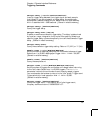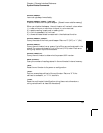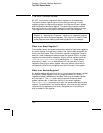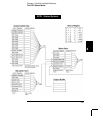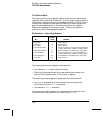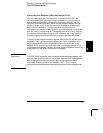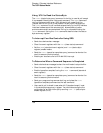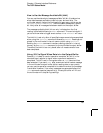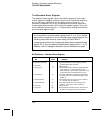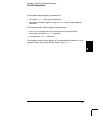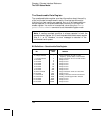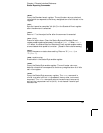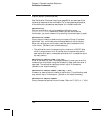
How to Use the Message Available Bit (MAV)
You can use the status byte “message available” bit (bit 4) to determine
when data becomes available to read into your bus controller. The
multimeter sets bit 4 when the first reading trigger occurs (which can be
TRIGger:SOURce:IMMediate). The multimeter subsequently clears
bit 4 only after all messages have been read from the output buffer.
The message available (
MAV) bit can only indicate when the first
reading is available following a READ? command. This can be helpful if
you do not know when a trigger event such as BUS or EXTernal will occur.
The
MAV bit is set only after all specified measurements have completed
when using the INITiate command followed by FETCh?. Readings are
placed in the multimeter’s internal memory when using INITiate.
Sending the FETCh? command transfers readings (stored in internal
memory by the INITiate command) to the multimeter’s output buffer.
Therefore, the
MAV bit can only be set after all measurements have
been completed.
Using *OPC to Signal When Data is in the Output Buffer
Generally, it is best to use the “operation complete” bit (bit 0) in the
standard event register to signal when a command sequence is
completed. This bit is set in the register after an *OPC command has
been executed. If you send *OPC after a command which loads a message
in the multimeter’s output buffer (either reading data or query data),
you can use the operation complete bit to determine when the message
is available. However, if too many messages are generated before the
*OPC command executes (sequentially), the output buffer will fill and
the multimeter will stop taking readings.
4
Chapter 4 Remote Interface Reference
The SCPI Status Model
139



